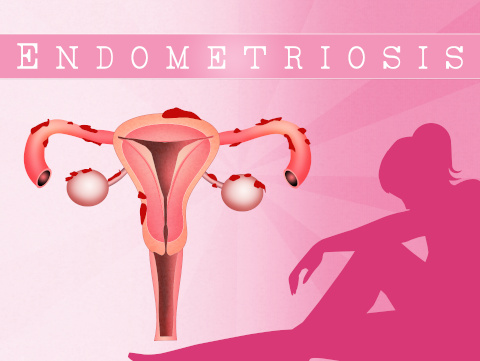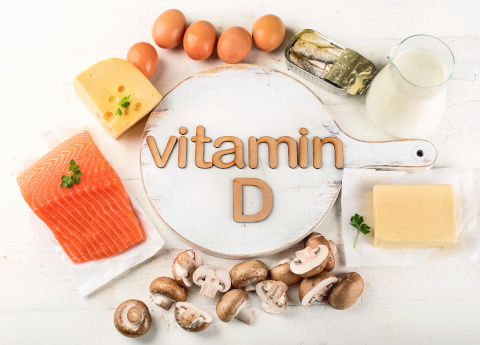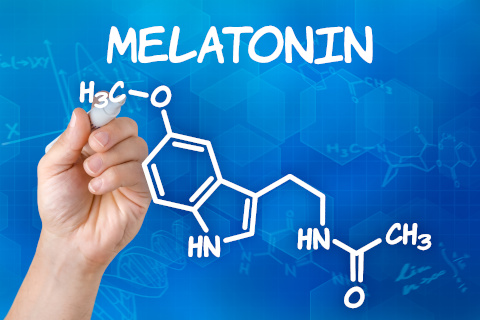Endometriosis is one of the most common, chronic gynecological conditions in women of reproductive age. Not only is it associated with severe, debilitating pain, but can also have significant implications for a woman’s fertility (2).
Endometriosis is defined by the presence of endometrial tissue external to the uterine cavity (2). This abnormally located tissue is still responsive to monthly change sin female sex hormones, which can result in the growth and bleeding of tissue (2). The immune system is reactive to this, leading to inflammation and fibrosis formation, which can cause further pain and other complications (4). The most common sites of endometriosis are within the pelvis, such as on the ovaries and fallopian tubes, but distal sites are also possible such as the lungs, stomach, spleen, kidneys and more (2). The severity and types of symptoms a woman experiences will depend on the location and extent of endometrial lesions. A definitive diagnosis requires surgery – a laparoscopy and biopsy to confirm (2). For this reason, diagnosis is often made clinically based upon a woman’s symptoms and ruling out other causes.

There are numerous theories on how endometriosis arises. Retrograde menstruation, in which during monthly shedding of the endometrial lining, some tissue moves in the opposite direction of normal outflow, is one of the more commonly accepted thoughts (2). Immune dysfunction is also thought to be involved. The immune systems of women with endometriosis seem to act with a much stronger inflammatory response to this endometrial tissue found in abnormal locations, and are not able to clear it as others may be able to (2). While the exact cause of endometriosis is still unclear, some risk factors have been identified. Family history of the condition, earlier age of menarche (first period), short menstrual cycles (less than 27 days), heavy bleeding, and longer duration of menstrual bleeding (more than seven days) are all associated with an increased risk of developing endometriosis (2). There are also some animal studies which suggest exposure to environmental toxins, such as dioxins, may have a causal role and increase a woman’s risk, but this is not well established yet (2).
Conventional Treatments
Current treatment options are somewhat limited, because of the limited understanding of what causes this condition. However, once endometriosis is present, female hormones are understood to be the main driver of its growth and aggravation, since this condition affects women during their reproductive years (2). Most conventional treatment options, such as oral contraceptives and other hormonal analogues, aim to reduce or control estrogen levels. These medications can be moderately helpful in reducing pain and other symptoms, but unsatisfactory for many and can come along with undesirable side effects (7). These are also not suitable options for a woman desiring to become pregnant. Painkillers such as NSAIDs are also often prescribed but are associated with other long-term risks, not always effective, and are only addressing one symptomatic component of the condition. The only ‘curative’ option is surgery, including a full hysterectomy, but of course this comes along with other long-term health risks and fertility implications (2). Conservative surgery is the typical option for women who wish to become pregnant, but is not always effective or an acceptable intervention for some. Therefore, there is a significant need to find other treatment and management options for women faced with endometriosis. An integrative approach may help address and target this condition from multiple angles, to reduce suffering and improve fertility outcomes.
The Role of Diet
Most of the research regarding diet and endometriosis, has investigated how diet influences the risk of developing endometriosis, not necessarily how it may be used in the actual treatment and management of endometriosis. It is plausible however, that the same factors are important – the types of foods that may predispose a woman to develop endometriosis, may also aggravate it. While the data is limited there does appear to be an association between a higher intake of trans fats, red meat and alcohol, and a higher risk of developing endometriosis (6). Another study reported that women with endometriosis seem to consume more red meat, coffee and trans fats, while consuming less vegetables and sources of omega-3 fatty acids, compared to women without it (8). It is thought that eating more fruits, vegetables, fish oils, and dairy products rich in calcium and vitamin D, may be connected with a lower risk of developing endometriosis (6). One study also reported that women going through IVF who had higher EPA (an omega-3 fatty acid) intake, were less likely to be found to have endometriosis (5). Consuming some of these foods, such as those high in omega-3 fatty acids, have been shown to positively influence inflammation in the body (11). Thus, it is reasonable to suggest diet may be one means of reducing inflammation associated with endometriosis, to help manage pain symptoms.
NUTRITIONAL SUPPLEMENTATION
Vitamin D

Vitamin D has numerous functions in the body. It is an important nutrient for proper immune function, and more specifically has been shown to have a role in modulating both inflammation and the proliferation of endometrial cells (4). Receptors for Vitamin D and an enzyme required to activate Vitamin D have also been found within endometrial tissues, which has led to investigating the role Vitamin D may have in the development and treatment in endometriosis. (4). Observational studies seem to identify that women with lower or insufficient Vitamin D levels may be more likely to have endometriosis, and those that consume more Vitamin D through their diets are at a lower risk (4). Data in general is promising that Vitamin D status may be important in how this condition arises, but not strong enough to determine a clear cause-effect relationship yet (4). Interventional studies, using Vitamin D as a treatment for endometriosis, are quite mixed. One study provided weekly injections of 50 000 IU of Vitamin D to women who still had significant pain scores eight weeks post-surgery (1). After 24 weeks, no significant different was found between Vitamin D and placebo on the severity of cramping or pelvic pain (1). Vitamin D may have other benefits, aside from reducing pain, and a woman’s baseline status may also be important before determining if supplementation will be beneficial. Overall, more research is needed to determine if Vitamin D has a role in the treatment of endometriosis, but correcting Vitamin D deficiency may be important in preventing the condition (1).
Melatonin

Melatonin is most well known for it’s role as a sleep-promoting hormone in the body. However, our understanding of this endogenous hormone has expanded, identifying it as a strong anti-oxidant, anti-inflammatory and analgesic (pain-killing) agent (10). For these reasons, there is interest to see if it could be useful to reduce inflammation and oxidative stress which contribute to pain symptoms in endometriosis. While it has mostly been studied only in cells and animal models, one human trial of 40 females, showed promising results (10). Half of the women were prescribed 10 mg of melatonin and the other were given a placebo, for eight weeks. Compared to the placebo-control, melatonin supplementation was able to reduce daily pain scores by 39% and period cramping (dysmenorrhea) by 38% (10). It also improved sleep quality and reduced the risk of needing to use ‘rescue’ analgesics by 80% (10).
NAC + Other Antioxidants
Another promising study investigated a combination product containing 600 mg of N-acetyl cysteiene (NAC), 200 mg of alpha lipoic acid, 25 mg of bromelain and 10 mg of zinc (7). These compounds have been demonstrated to have strong antioxidant activity, potentially capable of interfering with the processes at play in endometriosis-associated pelvic pain (7). At baseline, the mean pain score (on a visual analogue scale) was 6.68, with 86.4% of patients relying on NSAIDs for pain control. Of this 86.4%, 13.6% of women were reliant on taking NSAIDs everyday (7). The others only needed NSAIDs for about 4-5 days of their cycle. After three months, the mean pain score reduced to 4.55, and only 4.3% of women were relying on NSAIDs daily for pain control (7). The final evaluation after six months of taking the supplement, the mean pain score was 3.52 and only 1.3% of participants were still using NSAIDs daily (7). The changes in mean pain scores from the start of the trial to the six month follow-up were considered statistically significant (7). The greatest decreases in pain scores were seen in the women who had the most severe scores at the beginning of the trial (7).
Vitamin C + E
Vitamins C and E are two other strong anti-oxidants which may be helpful for fighting the oxidative stress in women with endometriosis, that contributes to pain. A placebo-controlled trial provided women with 1000 mg of Vitamin C and 1200 IU of Vitamin E daily for 8 weeks before surgery (9). Daily pain was reported to improve in 43% of patients, dysmenorrhea (period-related cramps) decreased in 37% and painful intercourse decreased in 24% of patients (9). It was also observed that there was a significant decrease in inflammatory markers in the peritoneum of these women (9). In the placebo group there was no change in daily pain or pain on intercourse, and only an improvement in dysmenorrhea for a few (9).
Resveratrol

Resveratrol is a polyphenol found primarily in grapes, wine, berries, certain teas and peanuts. It has been shown to have anti-oxidant, anti-inflammatory, anti-neoplastic (anti-cancer) effects, which may all be helpful in fighting the inflammation and oxidative stress associated with endometriosis (3). It has been shown to reduce markers of inflammation in many animal and cell studies. There a limited number of clinical trials, but some show benefit, especially when used in conjunction with oral contraceptives (3). In one study, 30 mg of resveratrol was given in combination with oral contraceptive to women who had not found the oral contraceptives to be effective at reducing pain (3). After two months of this combination, pain scores had significantly decreased. In contrast, another study of 44 women, compared resveratrol in combination with an oral contraceptive, to an oral contraceptive in combination with a placebo (3). After 42 days, it didn’t appear resveratrol had any greater effect beyond the placebo (3). However, more research is needed to fully understand the right dosing and length of use that may be needed for resveratrol is to have a positive effect on pain (3).
Conclusion
In conclusion, there are numerous supplemental interventions which may be helpful as an integrative approach to endometriosis, to help women manage chronic pain. Acupuncture, meditation and mindfulness-based interventions may also be helpful. It’s likely that a combination of dietary changes, supplements, lifestyle changes in conjunction with medications as needed, can act together and target the many factors involved in endometriosis, to provide women with more relief. As well, an integrative approach at the very least offers women more options to try, before having to turn to more extreme options such as hysterectomy to alleviate their suffering.
